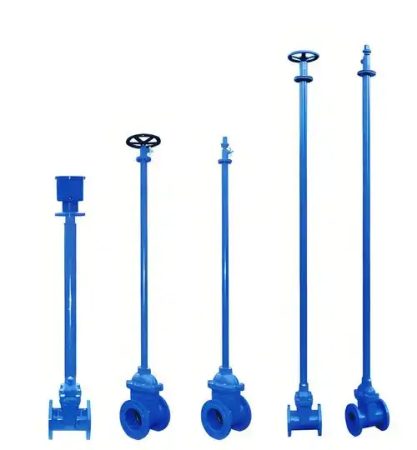
You can find many kinds of water valves underground. Each one has its own job:
- Ball valve: It shuts off water well. It does not need much care.
- Butterfly valve: It fits in small spaces and works well where space is tight.
- Pneumatic valve: It uses air to control water and helps in hard systems.
Choosing the right underground water valve is crucial for making the system work better and safer. Research shows that good valve choices, including ball valves, butterfly valves, and pneumatic valves, help systems stay strong and operate efficiently. This is especially important in emergencies or when water use is high.
Key Takeaways
- Learn about the main types of underground water valves. These include ball, gate, butterfly, pneumatic, and check valves. Each valve has its own job.
- Pick the right valve for your system. This keeps things safe and working well. The right valve stops leaks and backflow.
- Ball valves shut off water fast and seal tightly. They are good for emergencies and long use.
- Gate valves block off parts of a system. They work best in big pipes. They are not used to change flow.
- Butterfly valves save space and control flow quickly. They fit in small spots and are simple to use.
- Check valves stop water from flowing backward. This keeps your system safe from harm. They work by sensing pressure changes.
- Take care of your valves often. Look for leaks, rust, and make sure they work. Do this at least once a year to help them last longer.
- Safety valves help control pressure. They let out extra pressure by themselves. This stops the system from breaking.
Underground Water Valve Overview
Underground water valves are important in water systems. People use these valves to start or stop water in pipes underground. If a pipe breaks, you can use a valve to turn off the water fast. These valves match the size of the main pipe. They help you control water safely and easily. You see them in water plants, sewage pipes, and factories.
Types of Water Valves
There are many types of water valves for underground use. Each type does a special job and fits certain needs. Here are the main types you may find:
- Ball Valves: These valves use a ball that turns to open or close water flow. They shut off water well and work in big or small systems.
- Gate Valves: You move a gate up or down to use these valves. Gate valves are used in underground pipes. They are best when you do not need to open or close them often.
- Butterfly Valves: These valves have a disc that turns in the middle. They are good for quick use and fit in small spaces.
- Pressure Release Valves: These valves let out extra pressure to keep things safe. They are needed in water plants and factories.
- Other Valve Types: You may also see globe valves, check valves, and foot valves. These valves do special jobs like stopping backflow or controlling pressure.
?? Tip: Pick the valve that matches your system’s needs. The right valve keeps your water system safe and working well.
Functions
Each water valve type has its own main job. You can see what they do in the table below:
| Valve Type | Primary Function | Application Context |
|---|---|---|
| Ball Valve | Excellent shutoff and durability | Water distribution systems, sewage pipelines |
| Gate Valve | Isolates sections for repair or maintenance | Underground pipelines, washout stations |
| Butterfly Valve | Quick flow control in tight spaces | Water treatment plants, industrial applications |
| Pressure Release Valve | Releases excess pressure for safety | Water distribution, industrial systems |
| Globe/Check/Foot Valve | Throttling, backflow prevention, or well use | Specialized water control needs |
Isolation valves split the system for repairs. Ball valves shut off water well and last long. Gate valves help control water in big pipes. Butterfly valves let you change water flow fast. Pressure release valves keep things safe by letting out extra pressure. Each valve helps you control water and keeps your system working right.
Gate Valves

Operation
Gate valves are important in underground water systems. You use them to stop or start water flow. These valves work best for full flow or no flow. They are not used to change how much water moves. You do not use them to adjust water flow.
Full Flow
When you open a gate valve, water moves easily. The gate inside lifts up. Water passes straight through the pipe. This design keeps pressure loss low. You get a clear path for water. This helps your system work well.
Here is a table that explains how gate valves work:
| Mechanical Principle | Description |
|---|---|
| On-Off Control | Gate valves are made for open or closed positions, not for changing flow. |
| Vertical Movement | The gate moves up and down to let water pass or block it, making resistance low when open. |
| Sealing Mechanism | The gate sits on the gasket to seal tightly when closed, stopping water flow. |
| Pressure Loss | When open, gate valves let water move with little resistance, so pressure loss is low. |
| Application Areas | Used in water supply, wastewater treatment, power plants, and factories. |
Large Applications
Gate valves are used in big underground pipes. They handle large flows of water. You see them in water plants and sewage systems. They also work in power plants. Their strong build helps them last a long time.
Uses
Gate valves help you shut off water to part of a pipe. This lets you fix or check the system safely. You also find them in new water projects. They make water systems safe and easy to use.
Here are some ways gate valves are used underground:
- Shutting off parts in drinking water systems
- Controlling flow in sewage pipes
- Acting as shut-off valves for fire mains
- Making repairs and maintenance safe
- Being put in new underground water systems
?? Tip: Move gate valves often so they do not get stuck. Look for damage or wear. This helps them work when you need them. If you do not use them much, problems can happen.
Gate valves are special because they control water in big systems. They are best for shutting off and isolating water, not for changing flow. Using the right valve keeps your water system safe and working well.
Check Valves

Operation
Check valves play a key role in underground water systems. You use these valves to make sure water flows in only one direction. They stop water from moving backward, which protects your pipes and equipment.
Backflow Prevention
You need check valves for preventing backflow. When water tries to move the wrong way, the valve closes by itself. This keeps your system safe from damage and stops dirty water from mixing with clean water. You do not have to control these valves by hand. They work automatically when the water pressure changes.
Here is a table that shows how check valves work in underground water systems:
| Mechanism | Description |
|---|---|
| Flow Direction | Check valves permit flow in one direction and prevent backflow. |
| Operation | They operate automatically based on pressure differences. |
| Cracking Pressure | A minimum pressure is needed to open the valve, called cracking pressure. |
| Design | Each valve has an inlet and outlet, with a self-operating mechanism inside. |
Types (Swing, Lift)
You will find two main types of water valves used as check valves underground: swing and lift.
- Swing Check Valve: This type uses a disc that swings open when water flows the right way. If the flow stops or reverses, the disc swings shut. You do not need to do anything. The valve closes by gravity or reverse pressure.
- Lift Check Valve: This type uses a disc that lifts up when water flows forward. If water tries to go back, the disc drops down and blocks the flow. These valves work well in systems with high pressure.
?? Tip: Always pick the right type of check valve for your system. Swing check valves work best in horizontal pipes. Lift check valves fit vertical or high-pressure lines.
Uses
You use check valves in many places to keep water moving the right way. Here are some common uses:
- At pump outlets, check valves stop water from flowing back and damaging pumps when you turn them off.
- At the start of pipelines, they block water from going back to the source.
- In vertical pipes, check valves prevent gravity from pulling water back down, which can cause noise or pipe damage.
- At high and low points in long pipelines, they stop air or water from moving the wrong way.
- At branch junctions, check valves keep water from flowing into the main line from side pipes.
- At storage tank inlets or outlets, they prevent dirty water or chemicals from entering clean tanks.
Check valves help you protect your water system. You can trust them to keep water moving in the right direction and avoid costly repairs. When you choose the right types of water valves, you make your system safer and more reliable.
Ball Valves
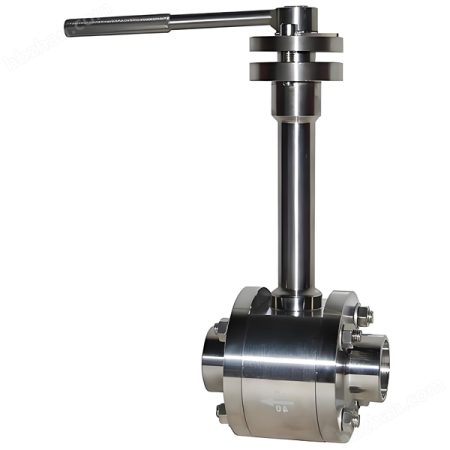
Operation
Ball valves play a key role in underground water systems. You control them with a simple quarter-turn handle. This design makes them easy to use, even if you do not have plumbing experience. The main part inside is a round ball with a hole through the middle. When you turn the handle, the hole lines up with the pipe, and water flows through. Turn the handle again, and the ball blocks the flow.
Quick Shut-Off
You can shut off water fast with a ball valve. The quarter-turn action lets you stop or start water flow in seconds. This quick shut-off is important during emergencies or repairs. You do not need to use much force, so anyone can operate these valves easily.
Sealing
Ball valves give you a tight seal. When you close the valve, the ball presses against the seat inside, stopping leaks. This strong seal makes ball valves perfect for shutoff jobs. You can trust them to keep water from leaking, even after long periods without use.
?? Tip: Ball valves have few moving parts. This simple design means less risk of breaking or leaking over time.
Here are some reasons why you might choose ball valves over other types:
- Ball valves last a long time because they have fewer parts that can wear out.
- They give you a strong, leak-free seal when closed.
- You can open or close them quickly with just a quarter turn.
- Ball valves work well in many temperatures and pressures.
- They cost less to maintain and are easy to repair.
You can see how ball valves compare to gate valves in the table below:
| Valve Type | Initial Cost | Long-term Cost |
|---|---|---|
| Ball Valves | Higher | Lower maintenance, more cost-effective in the long run |
| Gate Valves | Lower | Higher maintenance needs, increasing long-term costs |
Uses
You find ball valves in many underground water systems. They work well in both large and small water distribution networks. You often use them when you need a reliable seal and easy operation. Ball valves are common in mining, where you must control the flow of water, air, or other fluids. They help you manage pressure and temperature in tough conditions.
- Ball valves are essential for water distribution systems because they last long and shut off water well.
- You can use them in underground mining to control fluids safely.
- Their simple design makes maintenance and repairs easy.
- Ball valves fit many types of water valves systems, from homes to factories.
??? Note: If you want a valve that is easy to use, lasts long, and gives you a strong seal, ball valves are a smart choice for underground water systems.
Globe Valves
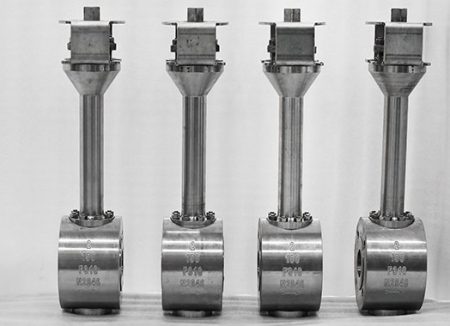
Operation
Globe valves help you control water flow in underground systems. You use them when you need to start, stop, or adjust how much water moves through a pipe. The main part inside a globe valve is a disc. This disc moves up and down along the centerline of the valve seat. When you turn the handle, the disc rises or lowers, letting you control the flow with precision.
Throttling
You can use globe valves for throttling. Throttling means you adjust the valve to let only part of the water through. This helps you manage water pressure and flow rate. The design of the globe valve makes it easy to fine-tune how much water passes. The disc moves in a straight line, so you get smooth changes in flow. This is different from ball or gate valves, which are better for just on or off.
- Globe valves operate by moving the valve disc along the centerline of the valve seat.
- You can use them to start, stop, or throttle water flow.
- The disc moves in a linear motion, which helps you connect or disconnect the pipeline as needed.
?? Tip: If you need to control water flow carefully, globe valves give you better results than most other valve types.
Flow Control
Globe valves give you excellent flow control. You can adjust the handle to let more or less water through. This makes them perfect for places where you need to mix fluids or keep water at a steady rate. You often find globe valves at pump discharges or tank inlets. These spots need careful control to keep the whole system running smoothly.
Most globe valves in underground water systems work at pressures below 200 psi. Some special valves can handle up to 300 psi or more, especially in long aqueducts or near dams. You should always check the pressure rating before you pick a globe valve for your project.
Uses
You will see globe valves in many parts of underground water systems. Their main job is to help you regulate water flow and pressure. Here are some common uses:
- You use globe valves to raise or lower a disc, which controls how much water moves through the pipe.
- You find them in water distribution networks, especially at pump discharges.
- Their design lets you adjust flow precisely, making them ideal for throttling.
Here is a table that shows where you might use globe valves:
| Use Case | Description |
|---|---|
| Flow Regulation | You can adjust water flow in underground pipelines with globe valves. |
| Precise Control | Globe valves help you keep water flow steady in distribution systems. |
| Common Locations | You find them at pump discharges, in networks, and at tank or reservoir inlets. |
??? Note: If you need to manage water flow at a certain point in your system, globe valves are a smart choice. They give you the control you need for safe and efficient operation.
Butterfly Valves
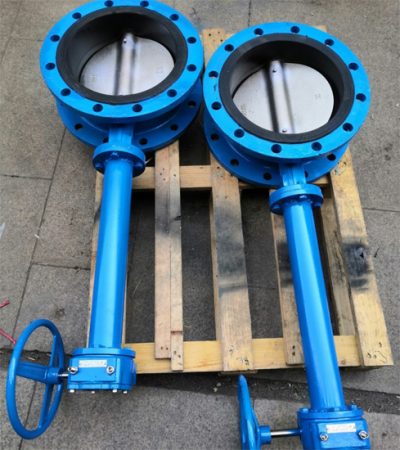
Operation
Rotating Disc
Butterfly valves help you control water by turning a handle. Inside, there is a disc. When you turn the handle, the disc turns sideways. This lets water move or stops it. You can open or close the valve with one quick turn. This makes butterfly valves fast and simple to use, even in emergencies.
The butterfly valve’s design helps stop leaks. The disc pushes against a soft seat to seal tight. This seat is strong and keeps water from leaking out. The stem links the disc to the handle above ground. Many butterfly valves have special covers and seals. These keep the valve safe from rust and damage underground.
Here is a table that lists the main parts of a butterfly valve and what each part does:
| Key Component | Description |
|---|---|
| Valve Body | Made from ductile iron or stainless steel, resists corrosion underground. |
| Disc | Rotates to control water flow, seals tightly when closed. |
| Seat | Made from elastomers, provides a strong, leak-free seal. |
| Stem | Connects disc to actuator, sealed to block soil and water. |
| Drive | Lets you operate the valve from the surface. |
| Protection Features | Coatings and seals guard against corrosion and damage. |
| Operation Mechanism | Disc rotates 90 degrees for full open or closed position. |
?? Tip: Butterfly valves work for both small and big pipes. You can use them in many underground water systems.
Space Saving
Butterfly valves do not take up much space underground. Their small shape fits between two pipe flanges. You do not need a lot of room to put them in. This makes them good for tight places like crowded chambers or narrow ditches.
- Wafer butterfly valves fit closely between pipe flanges.
- They do not need bolt holes, so they use less space.
- You can use them where other valves will not fit.
Butterfly valves are light and easy to carry. You can install them without much trouble. Their simple build means you spend less time fixing them. Special coatings help them last longer, even in tough underground spots.
Uses
You see butterfly valves in many underground water systems. They help you control water in lots of places. Here is a table that shows where butterfly valves are used:
| Application Area | Description |
|---|---|
| Water Supply Networks | Used to isolate sections in water supply systems. |
| Network Interconnections | Installed at points where water networks connect. |
| Factories | Manage water flow in industrial settings. |
| Pumping Stations | Control water movement in and out of pumps. |
| General Water Networks | Used throughout water distribution systems. |
| Fire Protection Networks | Help control water in fire safety systems. |
| Compatibility | Suitable for both drinking and raw water. |
| Installation | Can be placed in chambers or buried directly in the ground. |
You can use butterfly valves for clean or untreated water. They work well in water plants, factories, and fire safety systems. You can put them in chambers or bury them in the ground. Their strong build and special coatings help them last a long time with little care.
??? Note: If you want a valve that saves space, works fast, and lasts long, butterfly valves are a great choice for your underground water system.
Safety Valves

Operation
Pressure Relief
Safety valves keep your underground water system safe from high pressure. If the water pressure gets too high, the valve opens by itself. This lets extra water out fast. You do not need to open it by hand. The valve acts quickly when pressure changes. This helps stop pipes from bursting or breaking equipment.
A safety valve has different parts that work together. Each part does something important for safety. Here is a table that shows what each part does:
| Component | Function |
|---|---|
| Pressure Relief Valves | Protect systems from damage due to excessive pressure build-up. |
| Interlocking Systems | Ensure maintenance procedures are carried out safely by controlling valve operations. |
| Standby Relief Valve | Allows continuous operation during maintenance of the main relief valve. |
| Two-Key Interlocking | Prevents incorrect operation by requiring two keys for sequential valve operation. |
Each part helps make your system safer. The pressure relief valve opens when needed. The interlocking system makes sure repairs are done safely. The standby relief valve keeps water moving if you fix the main valve. The two-key interlocking system stops mistakes by needing two keys in the right order.
Emergency Release
Sometimes, a sudden problem can make pressure rise fast. Safety valves open quickly in these emergencies. When pressure gets too high, the valve opens right away. This quick action keeps your system safe. You do not have to wait or guess. The valve works on its own, even if no one is there.

?? Tip: Check your safety valves often during maintenance. A working valve can stop small problems from turning into big ones.
Uses
Safety valves are found in many underground water systems. They protect water mains, pump stations, and treatment plants. You also see them near pumps or at the end of long pipelines. Here are some ways safety valves are used:
- Stopping pipes from bursting when pressure is high
- Keeping pumps and tanks safe during sudden pressure spikes
- Helping repairs with interlocking systems
- Making sure water flows during valve maintenance
You should put safety valves where pressure can build up. This keeps your system safe and helps you avoid expensive repairs. Using these valves makes your water system stronger and more dependable.
Foot Valves
Operation
Foot valves play a key role in underground water systems, especially in wells. You install a foot valve at the very bottom of the pipe, where it draws water from the well. This valve has a strainer at its inlet. The strainer keeps dirt and debris out, which protects your pump and keeps the water clean. When you turn on the pump, it creates suction. This suction opens the foot valve, and water flows up the pipe.
Well Applications
You often use foot valves in well systems. The valve sits at the pick-up end of the piping, deep in the well. When the pump starts, it pulls water through the valve and up the pipe. The strainer blocks sand, leaves, and other debris from entering. This keeps your pump safe and helps it last longer. The valve also makes sure the pipe stays full of water, so the pump does not have to work harder each time you start it.
Here is how a foot valve works in a well:
- You install the valve at the bottom of the suction pipe.
- The pump creates suction, opening the valve and drawing water up.
- When the pump stops, gravity tries to pull water back down.
- The valve closes, stopping water from draining back into the well.
?? Tip: A foot valve saves energy by keeping the pipe primed. Your pump will always be ready to work when you need it.
Backflow Stop
One of the most important jobs of a foot valve is to prevent backflow. When the pump shuts off, water wants to flow back down the pipe. The foot valve closes tightly, stopping this from happening. This keeps your system primed and ready for the next use. It also protects your pump from running dry, which can cause damage.
You also get extra protection from the strainer. It keeps out dirt and small stones that could harm your pump or clog your pipes. This makes foot valves a smart choice for any well or underground water system.
Uses
You can use foot valves in many places, not just wells. They work in pools, ponds, and even in some public water systems. Here are some common uses:
- Drawing water from underground wells for homes or farms
- Keeping pumps primed in pools and ponds
- Protecting hydraulic pumps in industrial settings
- Used in fountains, levees, and water distribution systems
Foot valves come in different materials. You can choose brass for strength and corrosion resistance. Stainless steel works well for drinking water and high-pressure systems. Cast iron is strong but best for non-corrosive water. Plastic valves are light, affordable, and resist rust.
Here is a table to help you compare materials:
| Material | Features | Best Use Cases |
|---|---|---|
| Brass | Durable, resists corrosion, cost-effective | Home wells, small pumps |
| Stainless Steel | Safe for drinking water, handles high pressure | Industrial, potable water |
| Cast Iron | Strong, low-cost, but can rust | Non-corrosive water systems |
| Plastic | Lightweight, rust-resistant, affordable | Pools, ponds, corrosive water |
??? Note: Always pick the right material for your water source and system needs. This helps your foot valve last longer and work better.
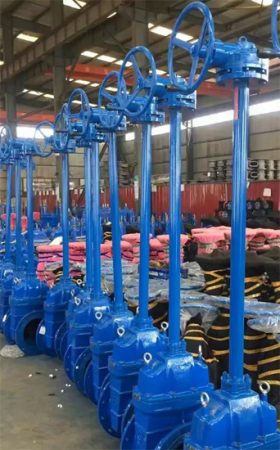
Knowing about water valves helps you keep your system safe. It also helps your underground water valve system work well. If you pick the right valve, you stop leaks and backflow. Think about where you will put the valve. Check what it is made of. Look at the soil around it. If you do not know which valve to choose, ask an expert. People who work with aquifers or groundwater can help you.
- Always check:
- Where you will use the valve
- If the material is strong
- If it can resist rust
FAQ
What is the best valve for shutting off water quickly?
You should use a ball valve. It lets you stop water fast with a simple quarter turn. Ball valves also seal tightly and last a long time.
How do I know which valve material to choose?
Check your water type and system needs. Use brass or stainless steel for drinking water. Pick plastic for pools or corrosive water. Always match the material to your water source.
Can I use butterfly valves in small spaces?
Yes, you can. Butterfly valves have a slim design. They fit well in tight spots where other valves may not work. You can install them easily in crowded chambers.
Why do I need a check valve in my system?
A check valve stops water from flowing backward. This protects your pipes and pumps. You keep your water clean and avoid damage to your system.
How often should I maintain underground water valves?
You should check your valves at least once a year. Look for leaks, rust, or stuck parts. Regular checks help your valves last longer and work better.
What happens if I use the wrong valve type?
Using the wrong valve can cause leaks, pressure problems, or system failure. Always choose the right valve for your job. If you are unsure, ask a professional.
Do foot valves only work in wells?
No, you can use foot valves in pools, ponds, and some public water systems. They keep pumps primed and stop water from draining back.
How do safety valves protect my water system?
Safety valves open when pressure gets too high. They release extra water to stop pipes from bursting. You keep your system safe and avoid costly repairs.
